How the Dzinpa Rangdröl Came to Tara Mandala
The roots of Dzinpa Rangdröl at Tara Mandala go way back to the beginning. The stupa at Tara Mandala was started in 1994 as a result of Lama Tsultrim having three consecutive dreams one night, in May 1994, during one of the first retreats held on the land. In these dreams, Nyala Pema Duddul repeatedly asked Lama Tsultrim to build a stupa dedicated to his lineage. Nyala Pema Duddul was a heart son and lineage holder of Do Khyentse. Namkhai Norbu Rinpoche‐‐who consecrated the stupa in 1999, and offered the relics of Nyala Pema Duddul and many others for it‐‐holds lineages from both Do Khyentse and Nyala Pema Duddul, including the Dzinpa Rangdröl. Namkhai Norbu Rinpoche received the Dzinpa Rangdröl lineage through Ayu Khandro and Changchub Dorje.
Adzom Drukpa who is also known as Ösal Dorje Sangdzö was also a Dzinpa Rangdröl lineage holder, but the more concrete inception of the Dzinpa Rangdröl lineage at Tara Mandala occurred in the summer of 2008. One evening, during Tulku Sang‐ngag’s Bardo Retreat at Tara Mandala, Tulku Sang‐ngag and Lama Tsultrim were sitting out on the back porch watching the sunset and she asked him, “Is there any connection between Machig Labdrön and Dzog Chen, since Machig Labdrön is mainly known as being associated with Mahamudra?” Rinpoche replied that Machig definitely did have a deep connection with Dzog Chen teachings. He mentioned that Drapa Ngoshe, her first teacher, was a tertön (hidden treasure revealer) and that Machig received Dzog Chen transmissions from him. He was a famous teacher from the Dranang valley in central Tibet, near Machig’s birthplace at the end of the Dranang valley. For many years most scholars thought that the Lab in Machig Labdrön’s name meant she was from a country called Lab. However, recent research by Lama Gyurme provided information that Lab was not a place but a family name. In 2010, with the guidance of Lama Gyurme’s brother‐in‐law Tashi, Lama Tsultrim was taken to the town of the family of Lab. In the foundations of the house where Machig was born there is a large prayer flag pole with a Green prayer flag. Lama Tsultrim offered the White Dakini tsog there with the local people who all consider themselves relatives of Machig Labdrön. The site is at the end of the fertile Dranang Valley which stretches up behind Dranang Gompa where Machig studied with Drapa Ngoshe. It is a famous valley because thirteen great yogins were born here including Lonchenpa and Uregyen Lingpa.
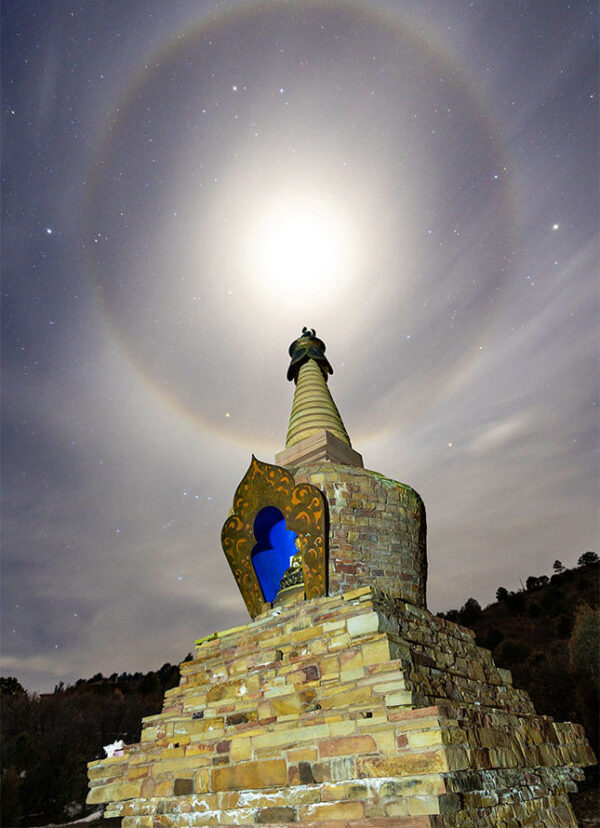
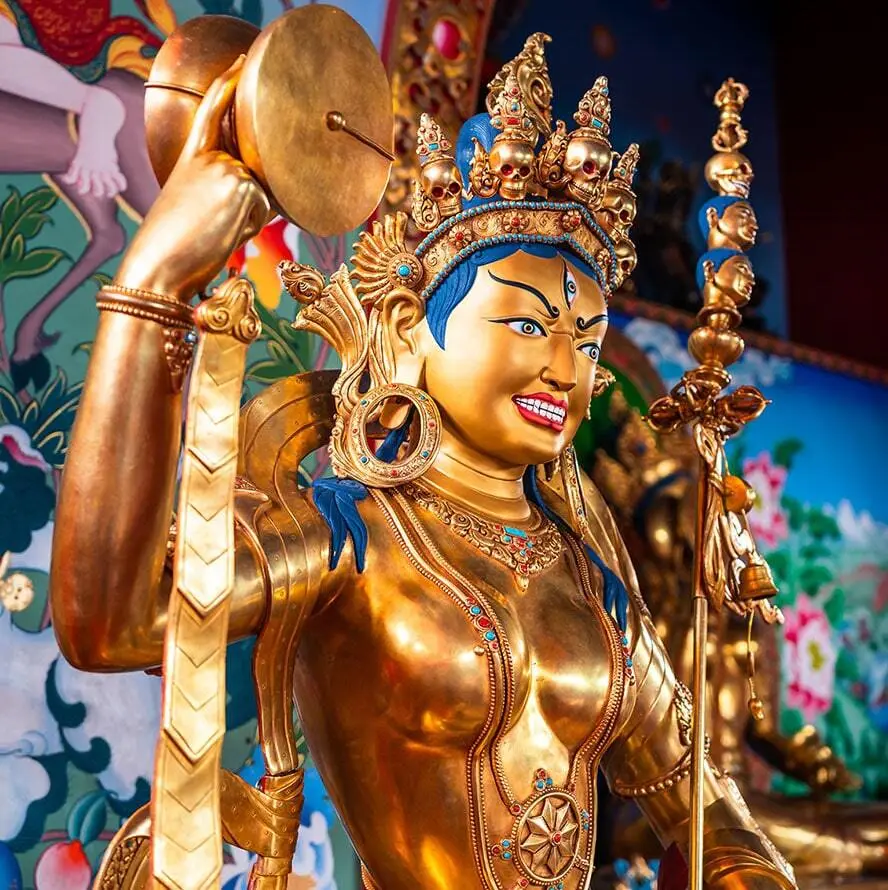
At that same time, Tulku Sang‐ngag Rinpoche related to Lama Tsultrim that there was a lineage called Dzinpa Rangdröl, a terma (revealed treasure teaching) from the great tertön Do Khyentse Yeshe Dorje (1800‐1866), who was the direct mind incarnation of Jigme Lingpa (1730‐1798). Tulku Sang‐ngag Rinpoche said that the Dzinpa Rangdröl lineage was centered around Machig Labdrön, Dampa Sangye, and Dzog Chen. He also said that the Dzinpa Rangdröl cycle was very complete starting with Ngöndro, followed by the yidam practices of Tsogyel Karmo (White Tsogyel) and Tröma, and then proceeding through the six yogas, and ending with Dzog Chen in a section very similar to Tri Yeshe Lama (Jigme Lingpa’s Dzog Chen cycle from Longchen Nyingtig) which includes complete Trekchö and Tögal instructions. He also mentioned that Dzinpa Rangdröl contains several Chöd practices and many Dzog Chen menngags (pith instructions).
This disclosure was very exciting for Lama Tsultrim because it indicated a connection between the two practice lineages she had been studying for so many years: the lineage of Machig Labdrön and the teachings of Dzog Chen.
Making this connection with the Dzinpa Rangdröl lineage came shortly after Lama Tsultrim’s recognition as an emanation of Machig Labdrön in Tibet. In June, 2007 at Zangri Khangmar, Machig’s seat in Tibet, Lama Tsultrim was recognized as an emanation of Machig Labdrön and offered the relics of Machig by the resident Karma Dorje Rinpoche, a Tulku of the brother of Mikyo Dorje, the 8th Karmapa. Karma Dorje Rinpoche had been recognized by Rigpa’i Dorje, the 16th Karmapa. On returning to Nepal, Lama Tsultrim was independently recognized as Machig’s emanation by Lama Tsering Wangdu Rinpoche, the main holder of Machig’s lineage from Tingri Langkhor in Kathmandu, Nepal. The foundation for this recognition by Lama Wangdu came three days before the pilgrimage group led by Lama Tsultrim arrived in Nepal. Lama Wangdu had a dream in which Machig appeared, surrounded by her male and female lineages, and said: ”I will be there in three days.” When the group arrived, Lama Wangdu Rinpoche placed Lama Tsultrim across from him and had a vision of Machig over her head dissolving into her heart. He subsequently wrote a recognition letter, a long life prayer and a praise of Lama Tsultrim to increase her Vajra pride.
This was at the same time when she was wondering how to establish a practice lineage of Machig at Tara Mandala when so much of her Dharma practice and interest had been in Dzog Chen teachings.
At that time, when Tulku Sang‐ngag Rinpoche told Lama Tsultrim about this connection, Lama Tsultrim gathered auspicious objects and offered them to him, making a request that he teach Dzinpa Rangdröl cycle at Tara Mandala. Rinpoche joyfully agreed, saying that he would teach it completely. Since he had received it twice from Dilgo Khyentse Rinpoche in Bhutan and Nepal, he had felt a little sad that he had never taught it fully. He had only taught his Shugseb nuns in Three Year Retreat in Nepal one of the Chöd practices from Dzinpa Rangdröl; otherwise he hadn’t taught it since receiving the transmission from Dilgo Khyentse. At that time, he said that he knew that Tara Mandala would be the place to give this teaching.
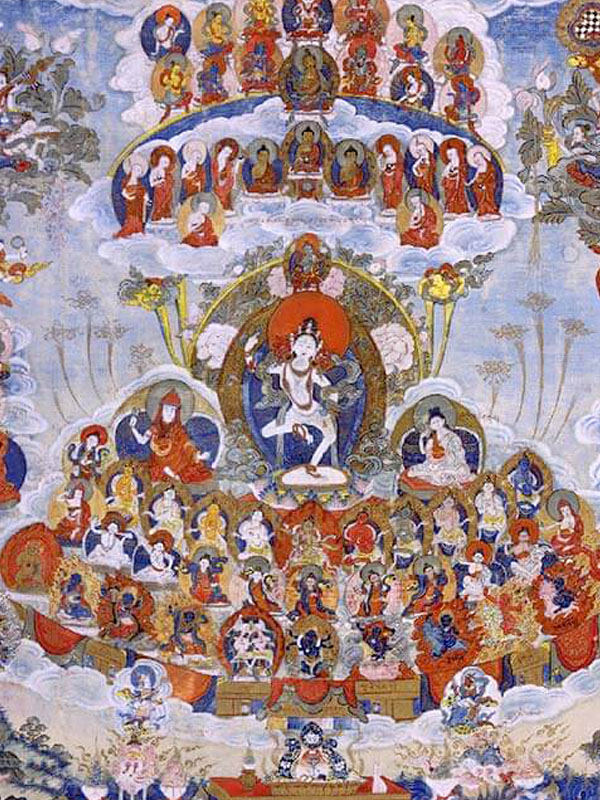
A Short Introduction to Do Khyentse’s Life
(Mostly extracted from Chapter 16 in Masters of Meditation and Miracles by Tulku Thondup)
Do Khyentse Yeshe Dorje (1800 – 1866) was the tertön (treasure revealer), who revealed the Dzinpa Rangdröl terma. He was the mind incarnation of Jigme Lingpa and was known as a master of miracles. He was considered the greatest Tibetan tantric master in terms of his extraordinary miracles and eccentric ways. His other names include Jalu Dorje and Traktung Leykyi Pawo. Khyentse means The One with Omniscience and Compassion, which was also one of the names of Jigme Lingpa. Do Khyentse revealed eight volumes of termas called the Tug Tig, which was recently compiled by Zenkar Rinpoche, the fourth Tulku of Do Khyentse, and by Dzog Chen Ponlop Rinpoche. The Dzinpa Rangdröl is the core cycle in the Tug Tig.
Do Khyentse often dwelled between dimensions. At various times in his life, from infancy on, he lost consciousness, or physically disappeared, for several days. In those times, he would travel to pure dimensions such as Guru Rinpoche’s pure land, Zangdo Palri, or the Dakini dimensions, and he would come back with various teachings.
Even Do Khyentse’s conception was miraculous. His mother, Ma Tsewang Men, and her husband were on a pilgrimage in central Tibet visiting a Machig Pha‐Lha shrine in Lhasa when two women led Ma Tsewang Men through a wall which she experienced as a door. Inside, she experienced another dimension where she was in a rich and beautiful palace. There she met a handsome prince‐like man and she enjoyed intimacy with him. She had an incredible experience of bliss with this prince who was Nyenchen Thanglha, the main protector of Tibet (Thanglha is a mountainous region in central Tibet.) As Ma Tsewang Men was brought back by the two women, she found herself standing again at the same shrine, but there was no doorway in the wall. Her husband and other people had been looking for her for three days.
When Ma Tsewang Men’s husband, Sönam Phen, discovered that she was pregnant, they knew that the father was not human. However, Sönam Phen accepted the unborn baby as his own child and acted as his father. Ma Tsewang Men was altered after this experience and became a medium. She would have experiences of light coming out of her body and had many visions.
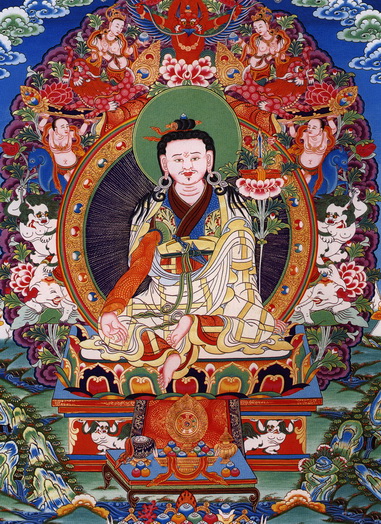 Jigme Lingpa
Jigme LingpaAfter Do Khyentse’s birth, he sat up immediately and chanted in Sanskrit. After three days, he disappeared from his pillow for three days. He later said that at this time he was taken into a crystal palace where Lamas and Dakinis washed and celebrated him.
Do Khyentse was an extremely powerful yogi and Siddha. His main teacher was the first Dodrubchen, Jigmé Trinley Özer. There are various remarkable stories of his life. What follows is a few of these stories.
It is said that at one time, as Do Khyentse came to a nomad camp, near a monastery, two dogs‐‐a white and a black one‐‐tried to attack him. He cut them both in half with his sword. Then the nomads arrived to fight him for killing their dogs, and he put them back together with the white head on the black body and vice versa. Then the dogs got up and ran away. These dogs eventually died a natural death, and the monks of the nearby monastery kept their skins as a memory of this amazing yogi.
Another time, because Do Khyentse was known as a great yogi, a few local men wanted to test him out. As Do Khyentse slept in his tent on a plain surrounded by boulders, they stole his horse. When he woke up and his horse was gone, he got up, took his saddle, went to a boulder, put the saddle on the boulder, and got on top of it. The boulder turned into a horse and he rode away. Those who had stolen his horse looked on, horrified at their impudence, and they apologized.
Once, while riding along the Gyalmo Nyul Chu (Silver Queen River), on a very dangerous path in Trakwar in Dzigak of Gyarong, Do Khyentse told his disciple, Rigtsal Thogme, ”If you are brave, push me and my horse down. He did so, and they fell hundreds of feet to the rocks below. Then Rigtsal Thogme thought, “Now I have killed my Lama,” and he jumped after them. The marks of Do Khyentse, his sword, and his horse are still visible where they imprinted into rock like it was mud. When the water is low these marks can be seen. Do Khyentse, the horse, and Rigtsal Thogme were all unharmed. Then Do Khyentse told Rigtsal Thogme to jump on the horse behind him, and they went up the steep rock face of the mountain, making imprints in the rock every step. Since then, death by falling ceased to occur on this dangerous path.
Patrul Rinpoche and Nyala Pema Duddul (for whom the stupa at Tara Mandala is built) were both amongst Do Khyentse’s heart sons. Once Do Khyentse came upon Patrul Rinpoche and began to beat him up dragging him by the hair. Patrul Rinpoche could smell alcohol on Do Khyentse’s breath and thus had doubts about him. Do Khyentse read his mind and then called him “Old Dog.” Patrul Rinpoche recognized his mistake and had a profound experience of awakening, after which in reverence of that experience he would sometimes sign his writing, “Old Dog.”
He received the Machig Nyen–gyu along with other teachings such as the Nyingtig Yabzhi from Dodrubchen Rinpoche with the third Ponlop and the fourth Dzog Chen Rinpoche.
Do Khyentse had a younger half‐sister, Lösel Drölma or Lösel Wangmo (1802‐1862), who had a different father, since Do Khyentse’s father was the protector of Tibet, Tanglha Nyangchen. In a close but highly unconventional relationship, she was also his consort and life companion, and became the main holder of his lineage (the Chö Dag). They were not ordinary people and lived much of the time in the visionary dimension. Lösel Drölma lived to be sixty years old. Phadampa prophesized to Machig’s daughter, Ladu Dorje Dronma (aka Ladüma), that she would be reborn as Lösel Wangmo.
They had three children: a daughter Khaying Dölma (1823‐1854) who eventually married the king of Trokyap, but died childless when she was thirty‐two. His first son, named Sherab Mebar (1829‐1842), was the very high tulku of the first Dodrubchen, Jigmé Trinlé Özer. Sherab Mebar died young at the age of fourteen, and his tulku was Drime Drakpa (1846‐?).
Do Khyentse’s second son, Dechen Rigpa’i Raldri (1830‐1896), was a tulku of Gyalsé Nyinché Öser (1793‐?), the son of Jigmé Lingpa. Rigpa’i Raltri received the whole Dharma transmission from Do Khyentse, and he lived to be sixty‐seven. His daughter, Tsedzin Wangmo, was the mother of Do Dasel Wangmo, who is the tulku of Lösel Drölma, Do Khyentse’s sister, and his Dharma heir. Rigpa’i Reltri’s son was called Zilnön Gyepa’i Dorje, or Do Rinpoche (1890‐1939), and was a lineage holder and very close to his niece, Do Dasel Wangmo, when she was growing up. Rigpa’i Reltri had another son, Tulku Rangjung, who was also Do Dasel Wangmo’s maternal uncle (brother of Tsedzin Wangmo). He was also close to Dasel Wangmo when she was growing up.
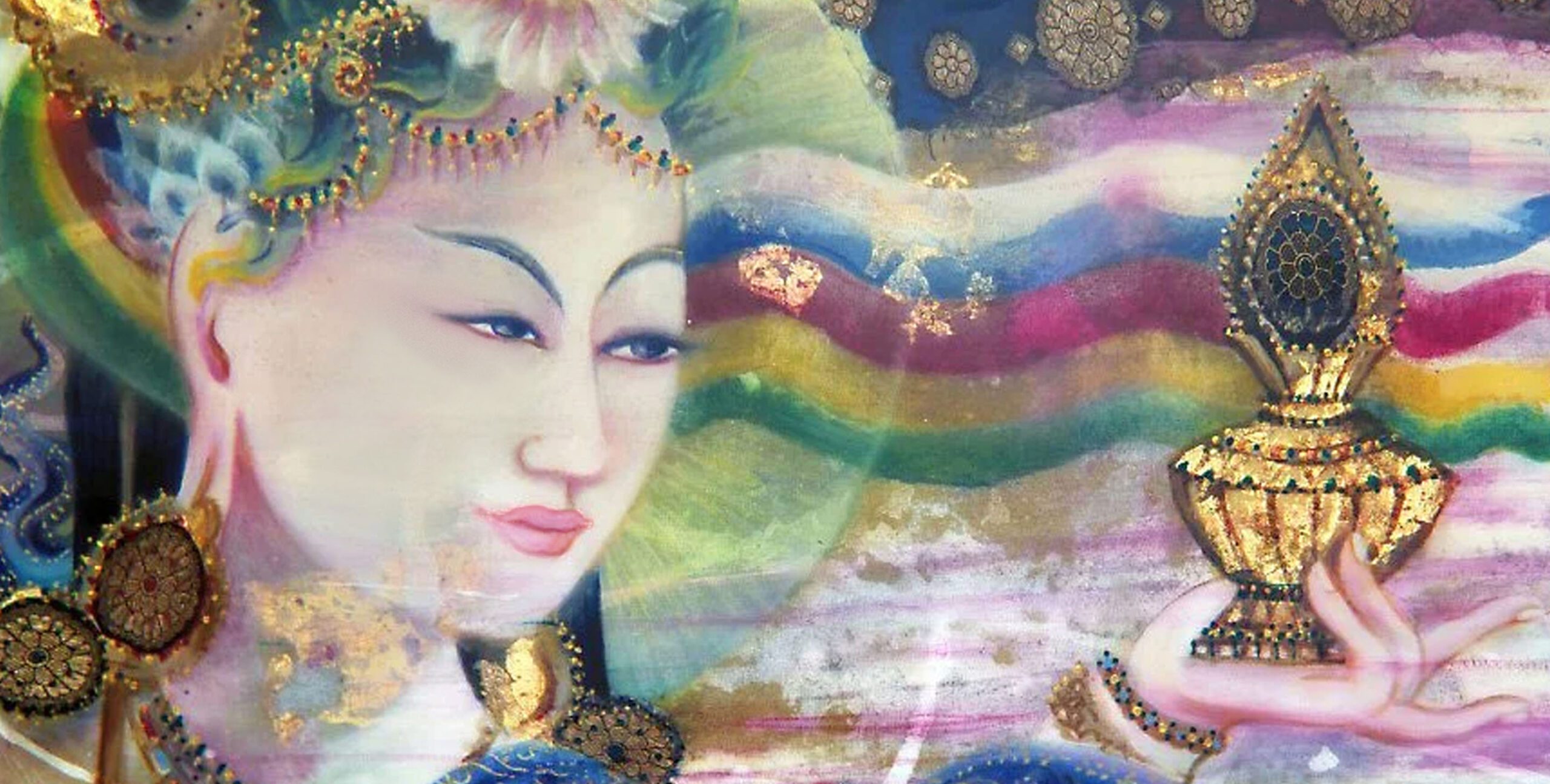
Do Khyentse’s family lineage for the Dzinpa Rangdröl passed from Rigpa’i Reltri to his son, Gyepa’i Dorje (1890‐1939), to Do Dasel Wangmo. His disciple lineage passed from Rigpa’i Reltri to Özer Thaye to Dzog Chen Lama Kyamo Manla to Khenpo Gondri to Do Dasel Wangmo.
Although he was born in the Golok region of Tibet in 1831, Do Khyentse was invited by the king of Chakla to Dartsedo, and from that time on he stayed mainly in the Dartsedo region. The king of that area, called Chakla, was one of the main kingdoms of Kham. He became one of Do Khyentse’s main patrons and students. Near Lhagang, in Kham, there is a mountain where both the King of Gyarong and the King of Chakla built tiny stone meditation huts near Do Khyentse’s retreat hut.
In 1832, he received teachings and visions in a dream from Machig Labdrön accompanied by five dakinis. Afterwards all obstructions from negatives aspirations were purified.
Do Khyentse’s biography can be read in the book Masters of Meditation and Miracles by Tulku Thondrup.
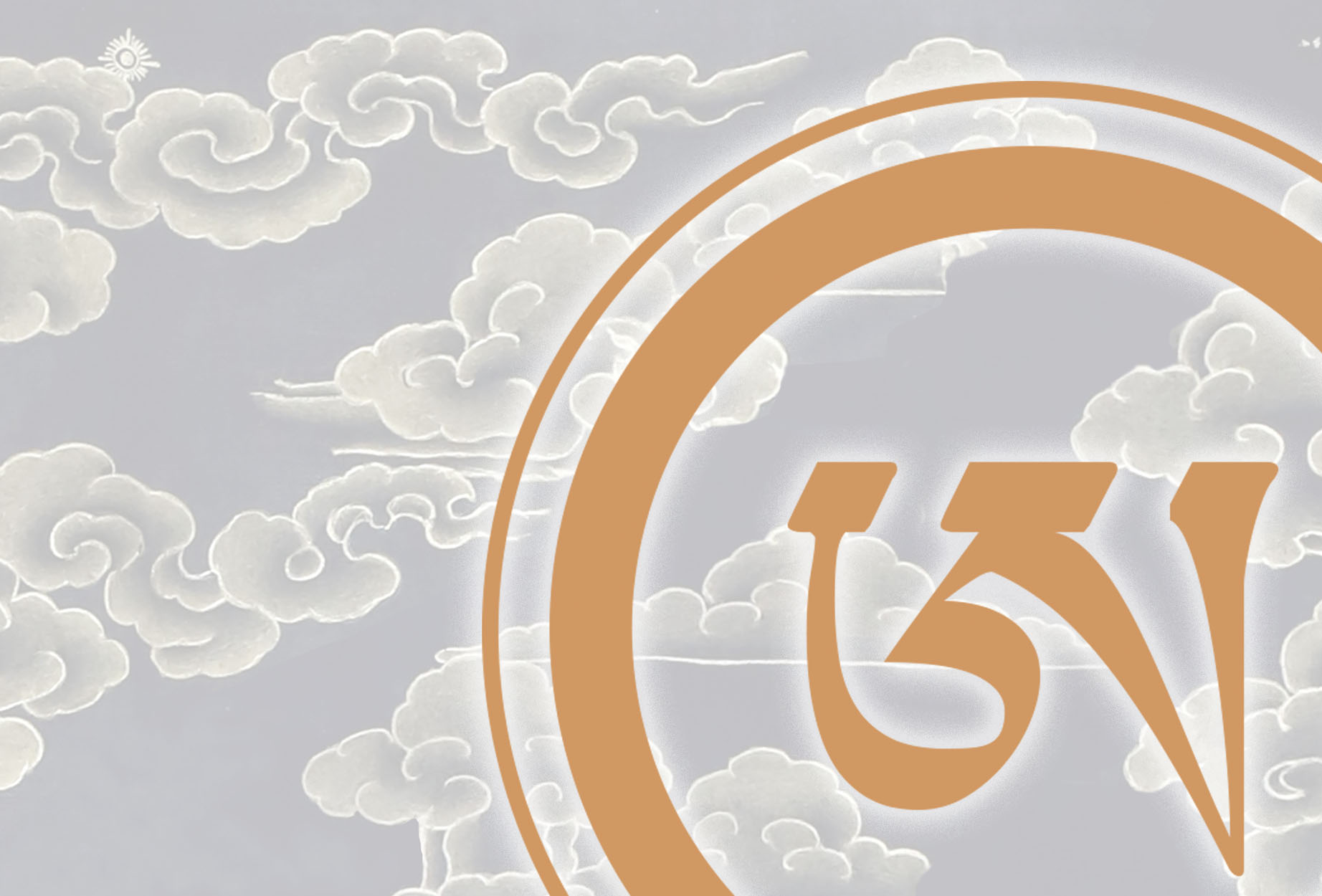
Dzinpa Rangdröl Revelation
During Jigme Lingpa’s lifetime, students asked him for teachings on Chöd. He prophesied that in the future there would be an incarnation that would teach a smaller quantity of termas named Tug Tig and the main focus would be on Chöd. His named would be Yeshe Dorje. Information from a teaching given by Lama Dorde to Lama Tsultrim, Dorje Gyaltsab Tulku Ösel Dorje, Julia Yeshe Jean, and Sarah Schneider in Kangding, November 2010. The revelation of Dzinpa Rangdröl came in three phases. There were three visions leading up to the revelation of the Dzinpa Rangdröl. This account is taken from Do Khyentse’s biography.
First Vision
During his visit to Machig Labdrön’s seat, Zangri Karmar, Do Khyentse had a dream. Two red people who were riding red horses told him that he was Todpa Bhadra. They said that they were the embodiment of Dampa. Then from the sky, a white woman riding a white male bear said that even though at this time it isn’t revealed, there will be a clear symbolic sign in the future.
Second Vision
In the dragon year, 1832, in the first month on the twenty‐fifth day (on Dakini day), at the break of dawn, within an expanse of rainbow light in the space before him, Machig Labdrönma appeared before Do Khyentse, surrounded by five dakinis, together with male and female yogins, like masses of stars. He saw her dancing and trembling. Through the sound of Hung Phet, emptiness thundered and roared. Then, due to his previous habit of great reverence and faith in Machig, he prostrated.
She said, “The emanation of Tsogyal is the emanation body of Machig. Dualism in my mind‐ stream is liberated in its own place. The four maras of conceptual thought is cut through into basic space. Being free from all husks of experiences of emptiness, you enter the blessings of the Great Mother, the blessings of realization, the continuum of enlightened mind.”
Even though Do Khyentse thought that he needed to receive essential instruction on the great hearing lineage, suddenly the entire retinue dissolved one by one: all the Pawos dissolved into Dampa of India, and all the Pamos dissolved into the five dakinis.
Then Machig said:
All you beings of fortunate birth, listen undistractedly! As for the cycle of the perfected Buddha’s word, it is the quintessence of the realization of Prajnaparamita. Madhyamika free from elaboration is the great space of emptiness. Having traversed the path of Mahamudra, the nature of mind, you realize the fruition of Dzogchen. My outstanding wealth is the profound Dharma of cutting through (chöd) maras. The path of the four immeasurables and the six paramitas is based on the indivisibility of emptiness and compassion.
Through the four great cuttings, the great accumulation of aeons is resolved. Taking sickness as the path, negative circumstances become an aid. Without abandoning samsara, there is no accomplishment of nirvana. Defeating the four maras into basic space, and being endowed with the six paramitas, you transcend samsara and realize your own mind to be the Buddha. This meaning is the unity of the sutra, mantra and nondual systems.
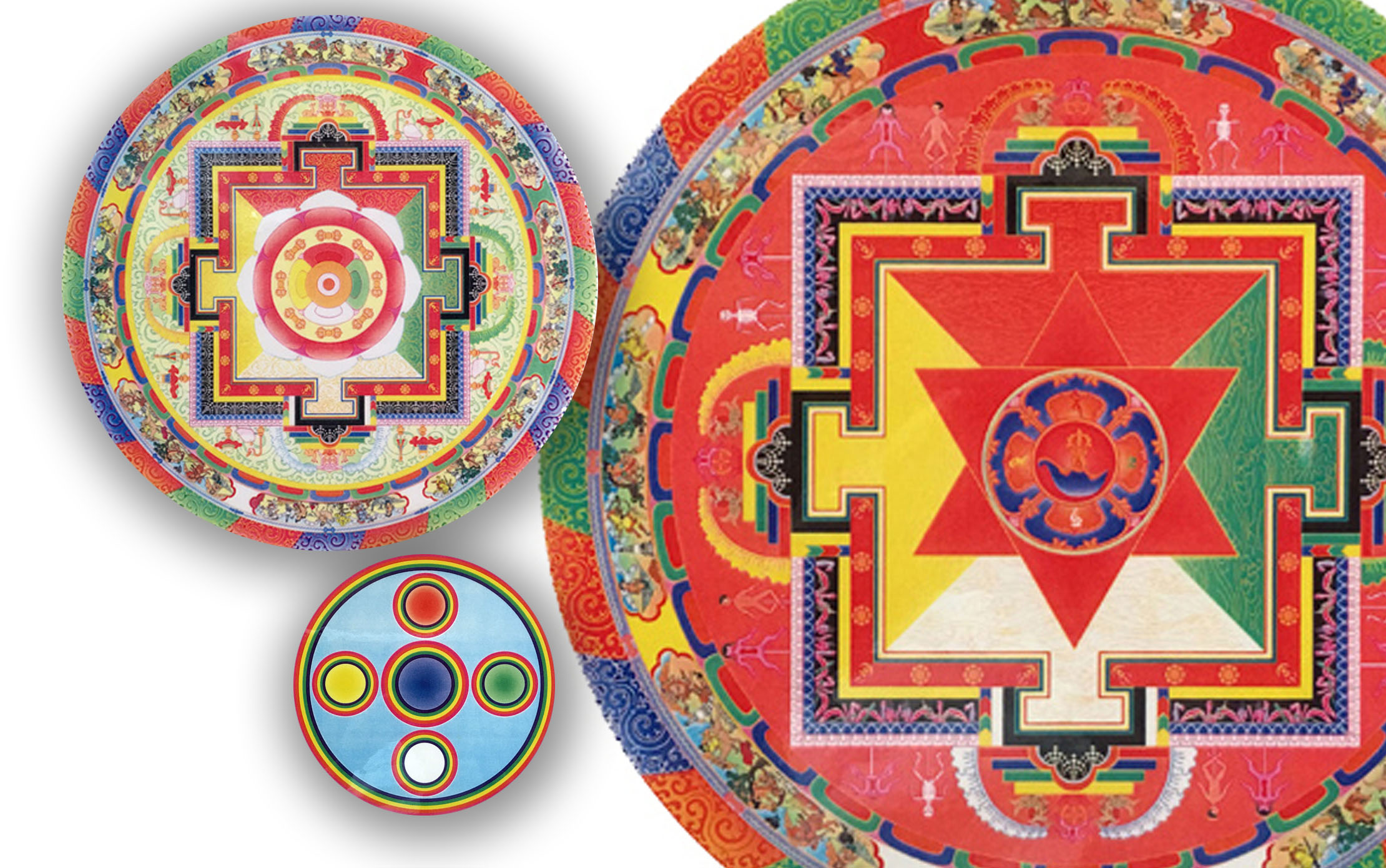
I have completely entrusted the general mantra, transmission, and oral instructions to the chief Dakini, Princess Mandarava’s emanation, the Daughter Dorje Drönma. According to Marvelous Life, the first two chapters by Namkha Gyaltsen (Nam mKha’ rgyal mtshan) of An Exposition of Transforming the Aggregates into an Offering of Food (Phungpo gzan skyur rnam bshad gcod kyi don gsal byed), Dorje Drönma, also called Lentogma, was the daughter of the grandson of Machig’s son Gyalwa Dondrub, who carried the same name as Machig’s other son Tod nyom Samdrub, and she was considered to be an incarnation of Machig. She was born during a debate in which her father remained speechless, and thus was called Lentogma (Lightning Reply). She propogated the Chöd and the lineage flourished under her. So that the instructions do not degenerate for the time being, when she experiences the time of her death, I will hide this in the expanse of Dechen Karmo’s mind. Dechen Karmo, the white Buddha Dakini, embodies Machig, Yeshe Tsogyel and Mandarava.
As for you, the holder of the secret treasury of the dakini, eventually, for the benefit of beings, when the time comes to reveal these appropriate teachings to the fortunate disciples with a mind of devotion, be skilled in the vast kapala of the ocean. When you’ve reached the limit of taming beings, I will transfer the blessing of my enlightened mind‐stream’s realization. Having perfected the benefit of beings with form and without form, when your life is at an end, don’t turn away from samsara. In you, unelaborated, like the sky, the elaborated instructions shine like constellations.
Holding the disciples you encouraged to purify karma through merit, you become the victor over the enemies of maras. You completely fulfill the hopes of limitless disciples. Keeper of the mind treasure of the way of secret skillful means, have skillful conduct with the transmission of the dakinis.
Machig said this, excellently pacifying. Abiding on the crown of Do Khyentse’s head, she gave him the Entrustment ceremony (bka’ gtad pron or katey). He thought that he should receive empowerment and transmission. Just as he was thinking this, amrita filled the skull‐cup and brother and sister experienced drinking it.
Machig gave him a small glass mirror with rainbow designs. Having seen only a few pages of the texts, the Hearing Lineage of Great Oral Instructions that Holds the Hands of the Buddhas, and the Ambrosial Pith Instructions from the Excellent Vase of the Throat, she said, “It will become clear in your mind. Now all the empowerments, transmissions, teachings, and instructions are spontaneously complete. Do not doubt it.”
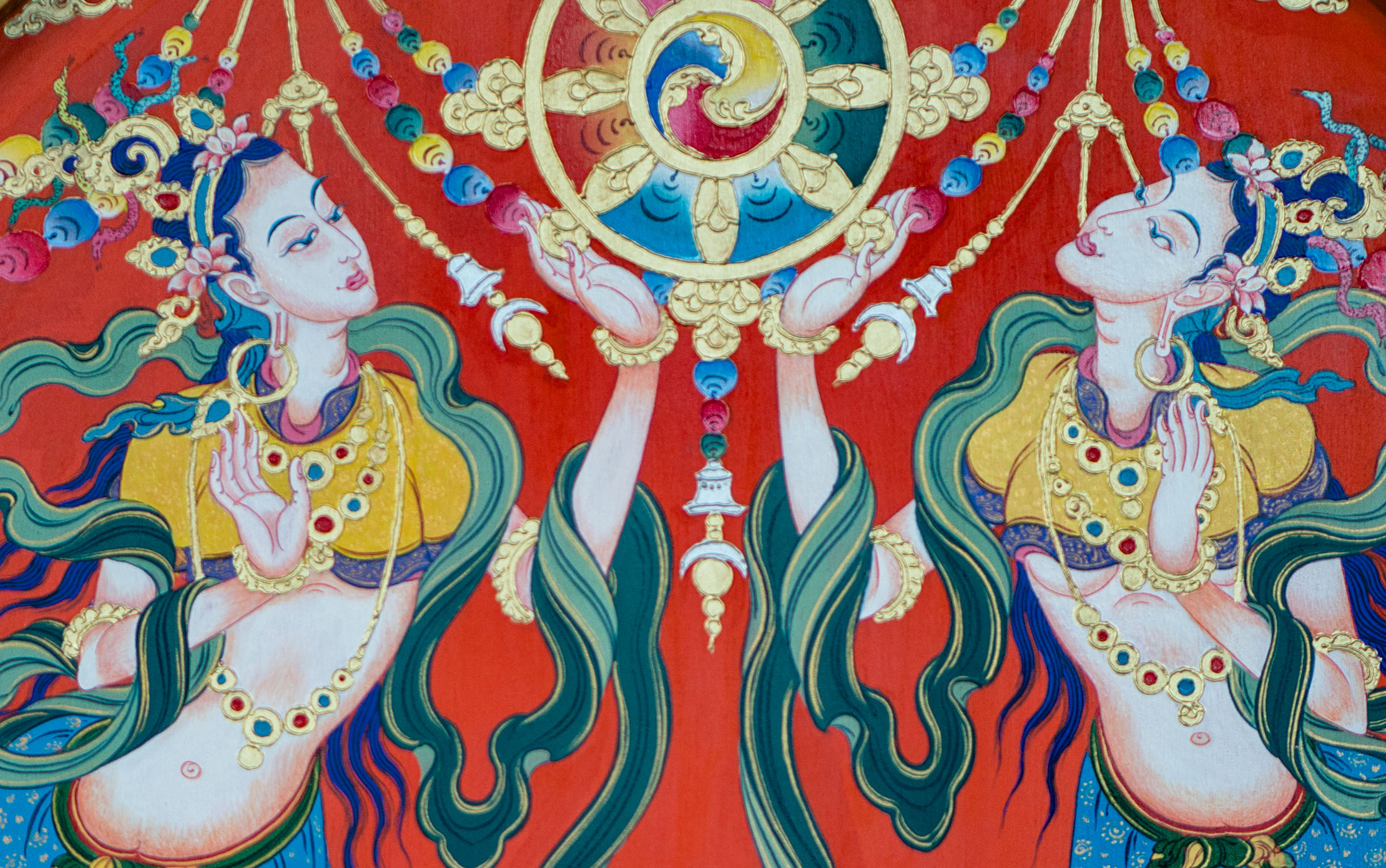
The sister handed over that mirror, and the holder of it, Dampa, said, “If you hold this dance, because the samaya breakers see what makes life vulnerable, if you act as the holder, it is excellent.”
And then having poured, he swallowed. Then Dampa of India played a damaru thunderously in his hand. He adopted a swaying, dancing posture and he united pacifying and cutting (chöd).
The one skilled in various auspicious methods, the apparitions of the minds of the six classes of beings, displaying the six emotions are the hallucinations of delusion. When the natural expression of the basic space of dharmakaya is perfected, grasping to generation and completion is destroyed to ashes. In the experience of great bliss, when you recitate without fixation, like a garuda breaking out of its eggshell, you achieve stability in the sky of the basic space of dharmakaya. Later when it is needed, you will show the signs of Dharma. Through understanding this meaning, hold your Vajra brothers and sisters.
Then as soon as everything faded into rainbow colors, he awoke from sleep. A wonderful aroma pervaded his room. Rainbow colors could be seen from the four directions. It faded and his sister experienced unfathomable visions. Then having grasped this, he became temporarily victorious over the enemies of perverted aspirations. And he took up the conduct of the lord of yogins.
Third Vision
The Third vision took place in Lutang. At this time the mind terma of the Dzinpa Rangdröl was revealed by Do Khyentse and written by Dechen Ozer.
The Lineage of Do Khyentse through Tulku Sang-ngag Rinpoche
Lösel Drölma (1802‐1861)–also sometimes called Lösel Wangmo, is referred to in the Dzinpa Rangdröl as the Dakini–was Do Khyentse’s sister and his Chö Dag (or Dharma Custodian). She was an incarnation of Labdul Dorje Drönma, Machig Labdrön’s daughter, as well as an emanation of Tara. Lösel Drölma is currently reincarnated in Kham, Tibet, as Ani Dasel Wangmo Rinpoche (1926‐ ). She is the great‐granddaughter of Do Khyentse and the granddaughter of his son Rigpa’i Raltri. Lama Tsultrim and her son, Dorje Gyaltsab Tulku Ösel Dorje, went to Tibet to meet her and they received the Katey (Entrustment) for all of the Tug Tig including the Dzinpa Rangdröl from her. Losel Drölma is the last living lineage‐holder in the blood‐line.
Dechen Rigpa’i Raltri (1830‐1896) was the second son of Do Khyentse, and a reincarnation of Jigme Lingpa’s son, who born from the union of Do Khyentse with his consort, Gyalyum Drolkar Drikung Chungtsang Gyalse Nyinche Özer (Chökyi Gyaltsen, 1793‐?), when Do Khyentse was 65. Rigpa’i Raltri was the grandfather of Do Dasel Wangmo Rinpoche and the main lineage holder of Do Khyentse.
Dechen Özer was a close heart student of Do Khyentse and scribe for the termas of Dzinpa Rangdröl. He is mentioned in the following contexts: in the colophon for Parchangma Chöd (“my dedicated student Dechen Özer Thaye”), in the colophon for the second protectors practice (“Özer who constantly served me”), and in the colophon for The Hook that Hooks the Blessing prayer (“my disciple Özer Thaye”).
The Fifth Dzogchen Rinpoche, Thupten Chökyi Dorje (1872‐1935)
 Thupten Chökyi Dorje from Masters of Meditation
Thupten Chökyi Dorje from Masters of Meditation Thupten Chökyi Dorje from Brilliant Moon
Thupten Chökyi Dorje from Brilliant MoonThe Fifth Dzogchen Rinpoche, Thupten Chökyi Dorje, was a close student of Patrül Rinpoche. He was recognized by Khyentse Wangpo and received teachings from Patrul Rinpoche, Khyentse Wangpo, Kongtrul Lodro Thaye, and Khenpo Pema Dorje. He was key in transforming the Shri Singha College at Dzog Chen monastery into one of the most famous institutions of learning in Tibet. He recognized most of the important Nyingmapa tulkus in eastern Tibet and dedicated his life to raising these tulkus and developing his monastery.
Khen Sönam Chöpel of Letok, was the Khenpo of Dzog Chen monastery. The abbreviated form of his name is Khen Sochoe Rinpoche. Dilgo Khyentse Rinpoche received the Dzinpa Rangdröl “empowerment and reading transmission” from him when Dilgo Khyentse was quite young (between the age of 10 and 14 if his autobiography’s chronology is correct).
This is the account from Brilliant Moon, the autobiography of Dilgo Khyentse Rinpoche, p. 40‐41:
At that time I met Khen Sochoe Rinpoche from Dzogchen Monastery, who was returning from a pilgrimage to Central Tibet and Tsang. He told me I had an obstacle coming and said he would remove it. He gave me the empowerments for the Three Roots of the Heart Essence of the Great Expanse (Longchen Nyingtig) and the empowerment and reading transmission for Do Khyentse’s profound treasure Self Liberation of Clinging (Dzinpa Rangdröl), which Shedrup [Dilgo Khyentse Rinpoche’s brother] had requested. He also gave us sacred medicine that had been created at Crystal Cave.
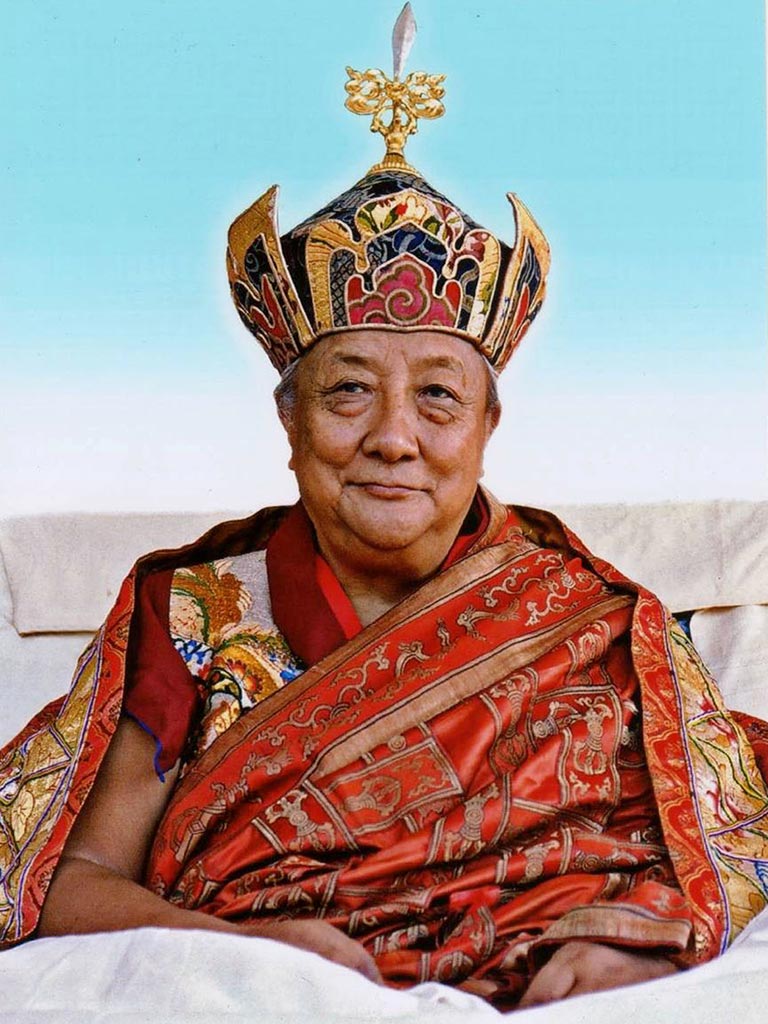 Dilgo Khyentse Rinpoche
Dilgo Khyentse RinpocheDilgo Khyentse Rinpoche (1910‐1991)
Dilgo Khyentse Rinpoche was one of the last of the great Lamas to receive their training and complete their retreats in Tibet. He was an amazing scholar and holder of the Rime (nonsectarian) tradition and spent twenty‐two years in retreat. He composed twenty‐two volumes and was a tertön. He was a sage, scholar and poet, and taught endlessly and never ceased to inspire all who encountered him through his extraordinary presence, knowledge and humor. In 1973, in Tashi Jong, India, Lama Tsultrim received three months of empowerments from Dilgo Khyentse Rinpoche of the Dam Ngag Dzöd. The Dam Ngag Dzöd includes the collection of empowerments of Phadampa Sangye and Machig Labdrön, which took an entire week of the three months to transmit.
Gochen Tulku Sang-ngag Rinpoche, (1954‐ )
Tulku Sang‐ngag Rinpoche received the Dzinpa Rangdröl lineage from Dilgo Khyentse Rinpoche. Tulku Sang‐ngag Rinpoche spent fourteen years by his side as his attendant and acted as his Vajra Master at certain times. Tulku Sang-ngag Rinpoche’s lineage begins with the master named Gyalwa Chokyang, who was one of the nine heart sons of Guru Rinpoche. One of Gyalwa Chokyang’s incarnations, the great tertön Drimé Lingpa, was a contemporary of His Holiness the sixth Dalai Lama. Drimé Lingpa studied with his principal master, Rigdzin Tukchok Dorjé, the son of the great tertön Tzasum Lingpa. Drime Lingpa devoted his life to spiritual practice, showing real signs of attainment. In particular, Drimé Lingpa was graced with visions of Guru Rinpoché and his consort, who both prophesied his personal destiny. This led to Drimed Lingpa revealing about four volumes of profound hidden treasure teachings (termas). He had many students, including the seventh Chakzam incarnation and Rigdzin Jigmé Lingpa. When Drimé Lingpa passed away, he prophesied that he would have two parallel rebirths, one in Bhutan and the other in the eastern Tibetan province of Kham.
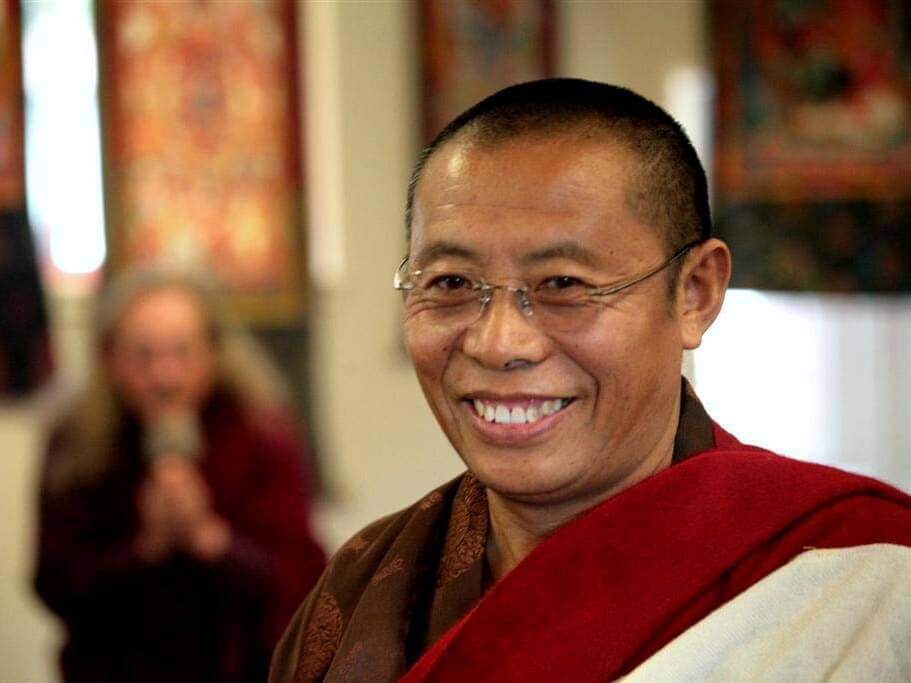 Gochen Tulku Sang‐ngag Rinpoche
Gochen Tulku Sang‐ngag RinpocheThe latter incarnation was born in Doshul and named Gyalwa Gyatso. It was he who founded Gochen Monastery. His incarnation was Pakpa Gyatso, followed by Tsewang Tendzin and a succession of incarnations up to Namkha Tsewang, the previous tulku. Tulku Sang‐ngag is the sixth incarnation of the eastern Tibetan incarnation Gochen tulku.
Other Connections with Dzinpa Rangdröl at Tara Mandala
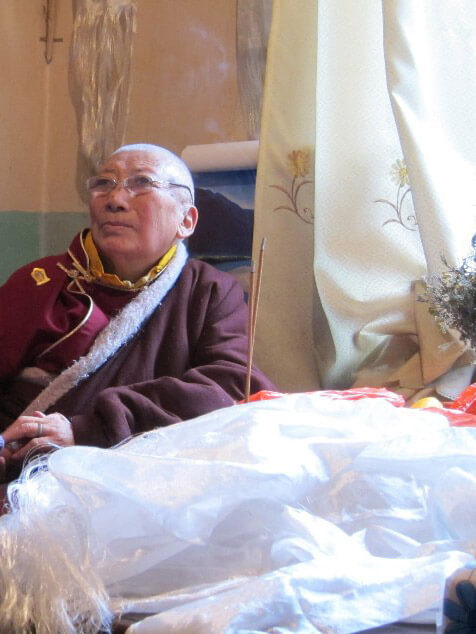 Do Dasel Wangmo taking a pulse
Do Dasel Wangmo taking a pulseDo Dasel Wangmo (1928 )
Do Dasel Wangmo is the great‐granddaughter of Do Khyentse, the last of the family lineage of Do Khyentse. She holds both the disciple lineage and the family lineage. She is a tertön since childhood and received many termas from Gesar of Ling. She burned most of her termas as soon as she wrote them, saying there are enough termas in the world. However, she still had to write them because if she didn’t she had extreme pain in her upper back and chest. Lama Dorde, her close disciple, has a few of her termas that she allowed him to keep. Her mother Tsedzin Wangmo (1894‐1953) was the daughter of Do Khyentse’s son, Rigpa’i Reltri. Her father was a long haired yogi. She was raised by her mother and maternal uncles, Gyepa’i Dorje and Tulku Rangdröl. She has lived her life as a Tibetan doctor and rarely teaches Dharma and then only at the behest of Zenkar Rinpoche. She is highly revered by the lineage lamas. She summers at Dzog Chen Monastery and winters in Dartsedo where she is the doctor for the Tibetan college.
Do Dasel Wangmo gave Lama Tsultrim and Dorje Gyaltsab Tulku Ösel Dorje the Entrustment Ceremony (Tib. bka’ gtad pron. Katey) for all of Do Khyentse’s termas (Tug Tig), something she has only given a few times in her life. This took place November 23, 2010 in Dartsedo (Chin. Kangding) at the Sechzuan Tibetan School in her apartment there where she is the school doctor. She is an ordained nun and a famous Tibetan doctor. Karzang Rinpoche of Dzog Chen Gompa said that if Ani Dasel stays at Dzog Chen it is such a great blessing, she doesn’t need to do anything, just her presence is enough to bestow blessings.
Namkhai Norbu Rinpoche and Dzinpa Rangdröl
Namkai Norbu Rinpoche is a Dzog Chen master who received Dzinpa Rangdröl directly from Ayu Khandro, who had received it from Nyala Pema Duddul. Nyala Pema Duddul was Do Khyentse’s heart student and he took rainbow body in 1872. Ayu Khandro also received the Dzinpa Rangdrön from the great yogi Togden Semnyi. Namkhai Norbu Rinpoche consecrated the Nyala Pema Duddul stupa for which he gave many important relics at Tara Mandala on 9/9/99. See the biography of Ayu Khandro in Women of Wisdom by Tsultrim Allione.
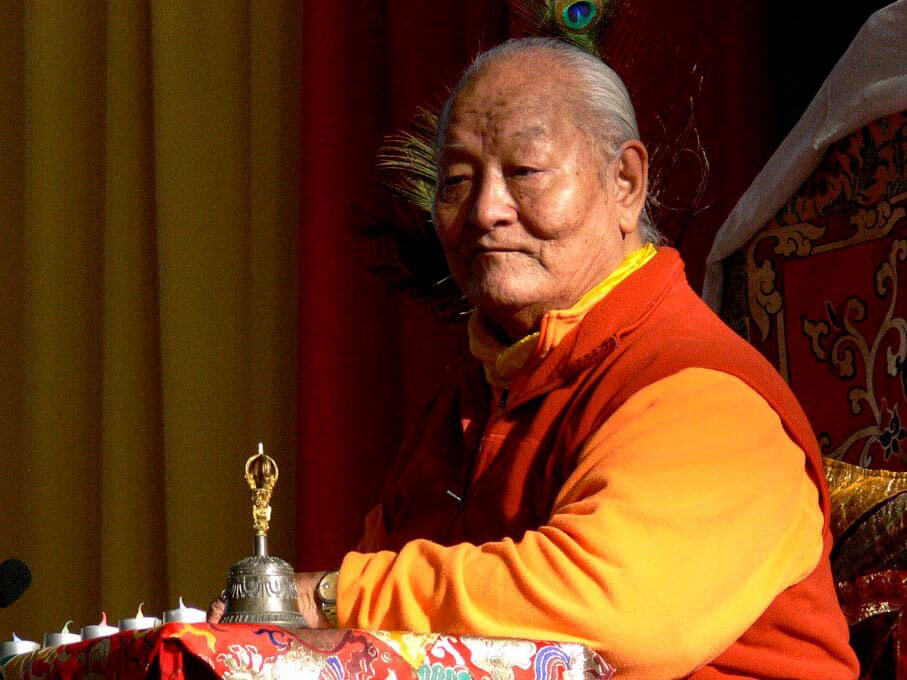
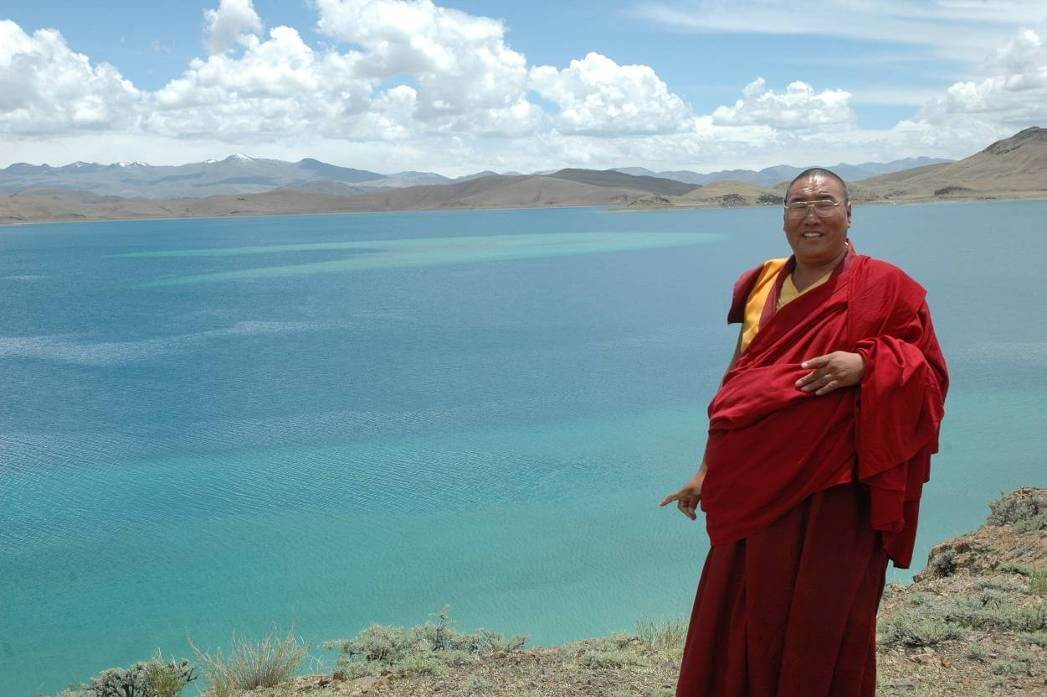 Adzom Paylo Rinpoche in Tibet
Adzom Paylo Rinpoche in TibetAdzom Paylo Rinpoche and Dzinpa Rangdröl
Dzinpa Rangdröl is deeply connected to Adzom Paylo Rinpoche, the extraordinary reincarnation of the son of Adzom Drukpa Drodul Pawo Dorje. Adzom Drukpa Drodul Pawo Dorje (a ‘dzom ‘brug pa ‘gro ‘dul dpa’ bo rdo rje) aka Natsok Rangdröl (sna tshogs rang grol) (1842‐1924) was an important master in the Dzogchen and Nyingtig lineages. He was a student of Shechen Öntrul Thutob Namgyal, Kathok Situ Chökyi Lodrö, Jamyang Khyentse Wangpo, Jamgön Kongtrul Lodrö Thayé, Patrul Rinpoche, Khenpo Pema Vajra, Nyala Pema Düddul and Mipham Rinpoche and a teacher of Tokden Shakya Shri, Tertön Sogyal Lerab Lingpa, Yukhok Chatralwa Chöying Rangrol Tsö Patrul Rinpoche, and Jamyang Khyentse Chökyi Lodrö.
He was the teacher of Togden Shakya Shri, whose grandson Apho Rinpoche was one of Lama Tsultrim’s first teachers when she was a nun. Pema Wangyal, and also an emanation of Jigme Lingpa. Adzom Paylo Rinpoche received extensive commentaries in dreams on Dzinpa Rangdröl from Nyala Pema Duddul. Long before Dzinpa Rangdröl arrived at Tara Mandala, Nyala Pema Duddul appeared to Lama Tsultrim three times in one night, in 1994 and asked her to build a stupa dedicated to him at Tara Mandala. When Adzom Rinpoche first came to Tara Mandala, in the summer of 1999, the stupa was nearing completion and he placed the termas of Nyala Pema Duddul into the stupa. Adzom Drukpa Pawo Dorje was one of a heart disciple of Do Khyentse and was given his lineage to propagate.
Also, there is a connection because Adzom Rinpoche is an emanation of Jigme Lingpa and Do Khyentse was a reincarnation of Jigme Lingpa. The terma cycle of Jigme Lingpa Longchen Nyingtig and Dzinpa Rangdröl are linked in this way. When Lama Tsultrim mentioned Adzom Paylo Rinpoche’s name to Do Dasel Wangmo she brought her hands together at her heart and began to pray, saying he is a very great Lama. We make prayers of aspiration that someday Adzom Paylo Rinpoche will teach the commentaries that he received on Dzinpa Rangdröl in dreams and visions from Nyala Pema Duddul as well as continuing Jigme Lingpa’s Longchen Nyingtig at Tara Mandala.
Practices of the Dzinpa Rangdröl
The Tibetan word Dzinpa means to cling or to fixate. Rang means self, innate, or inherent. Dröl means liberation. As such, the term Dzinpa Rangdröl may be translated as Self Liberation of Clinging, or Inherent Liberation of Fixation with the idea that fixation or clinging are liberated by themselves in the nature of mind. It is the core practice of Do Khyentse extensive terma cycle, the Tug Tig.
The Dzinpa Rangdröl is a very complete path in itself. It is a set of Dzog Chen practices that are deep, esoteric, inner, and yogic. This lineage has been held very secretly. The practices of the Dzinpa Rangdröl are a complete path that can lead to the rainbow body.
The whole lineage cycle contains the practices of Ngöndro (an inner yogic Ngöndro), the White Dakini sadhana, the Tröma sadhana, the Six Yogas, Trekchö and Tögal. There are also various other connected yogic and Dzog Chen practices attached to this cycle.
Article by Dagmar Löwenkamp. Beth LeeHerbert, and Lama Tsultrim